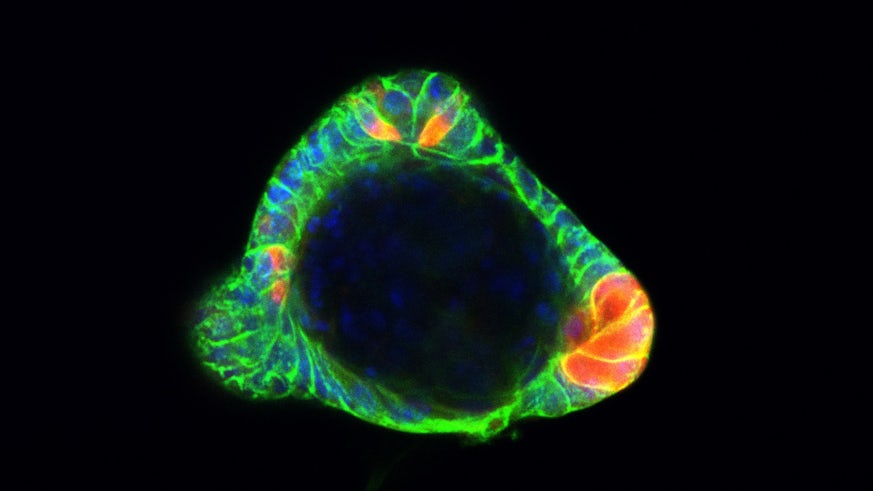Cancer Research UK funds multi-disciplinary research project
21 June 2016

Professor Trevor Dale and Professor Paola Borri of Cardiff University School of Biosciences have been awarded almost £400,000 by Cancer Research UK for a new multidisciplinary research project.
The 3 year project aims to characterise and analyse 3D organoid cell structures using a chemical analysis technique called CARS that has been adapted to work on an optical microscope, in collaboration with Professor Wolfgang Langbein, from the School of Physics at Cardiff University.
3D organoid structures show many of the characteristics of the tissues and cancers from which they are derived and have recently been used to test potential novel cancer drugs in high-throughput screening assays. The variability in size and shape of individual organoids in culture, can lead to challenges in analysis and reproducibility so an analytical tool was needed to be able to analyse each individual organoid structure over a period of time, particularly in response to drugs.
CARS (Coherent Anti-Stokes Raman Scattering) microscopy is a dye-free method which images structures with an optical contrast originating from the characteristic intrinsic chemical vibrational motion of the molecules in the cells being imaged. One important advantage of this method is that the sample remains almost unaffected during imaging meaning that the same organoid structure can be studied over multiple days, crucially both before and after drug treatment.
By comparing this new technique with traditional confocal microscope imaging of individual organoids, Prof Dale and his colleagues will be able to visualize the detailed biology of how organoids respond to different drug compounds in real time without the need for artificial cell labelling. This will help the selection of more biologically relevant compounds at each stage of drug discovery by providing a more detailed picture of the ways that cancer cells respond to therapies.
Prof Trevor Dale said ‘I am excited to be able to develop a new visual and chemical-specific language that can identify drug responses within the complex cancer cell environment. The research should eventually lead to faster identification of effective drugs for cancer patients.'